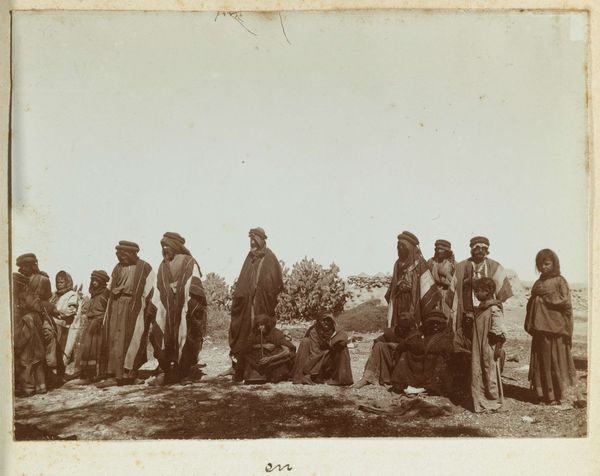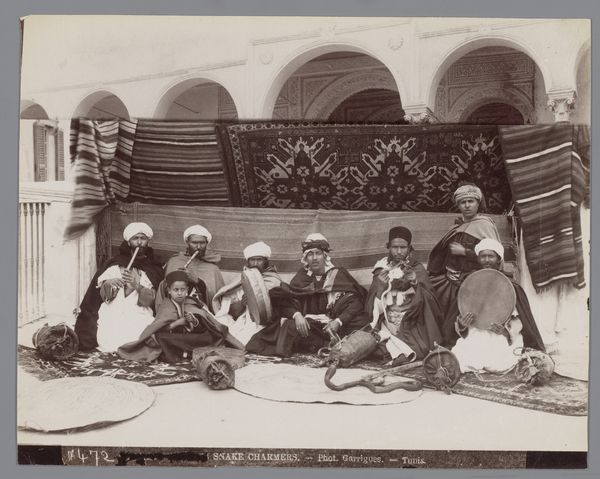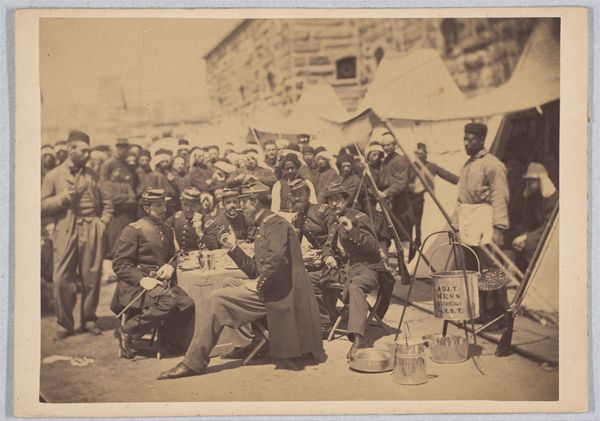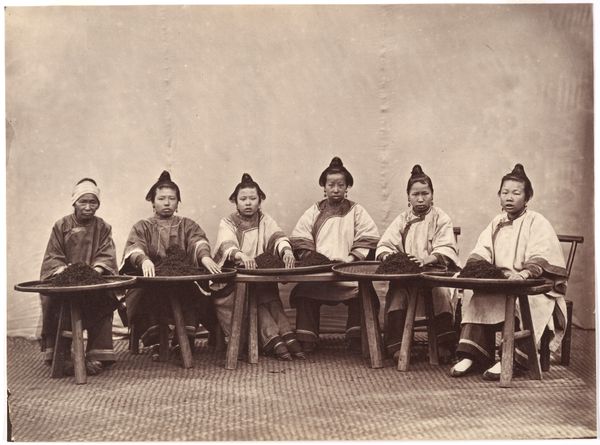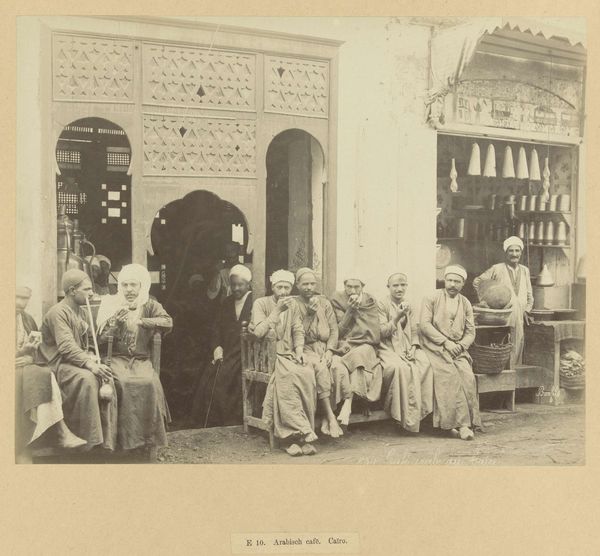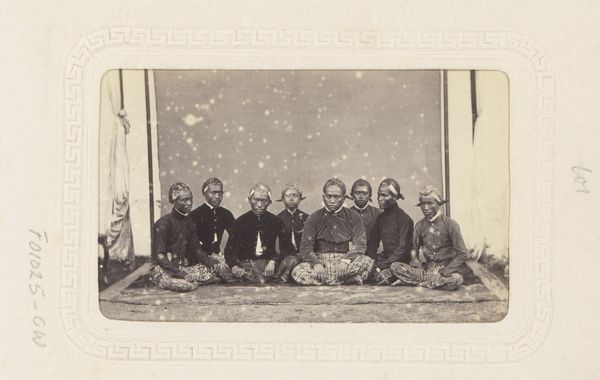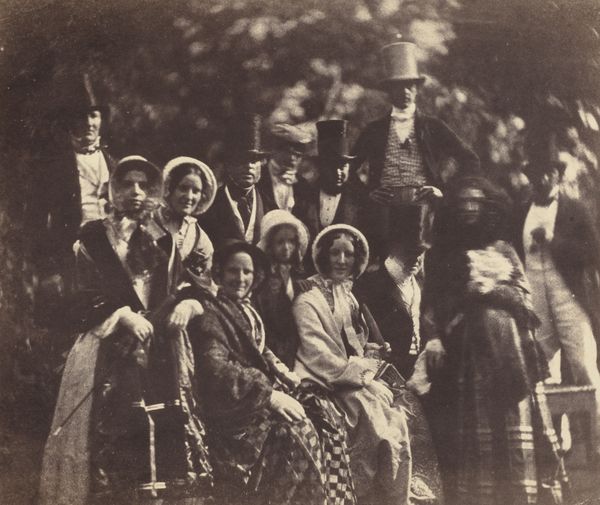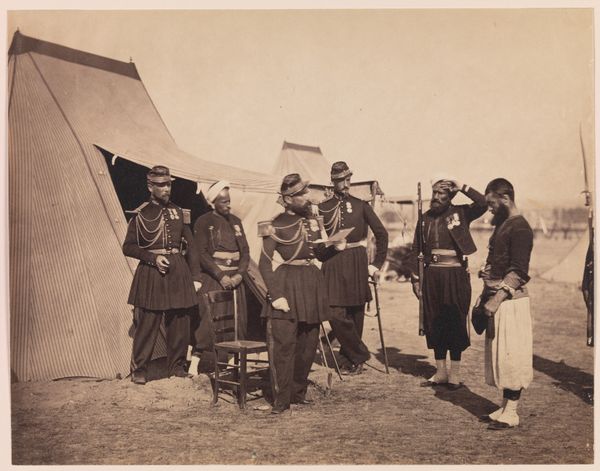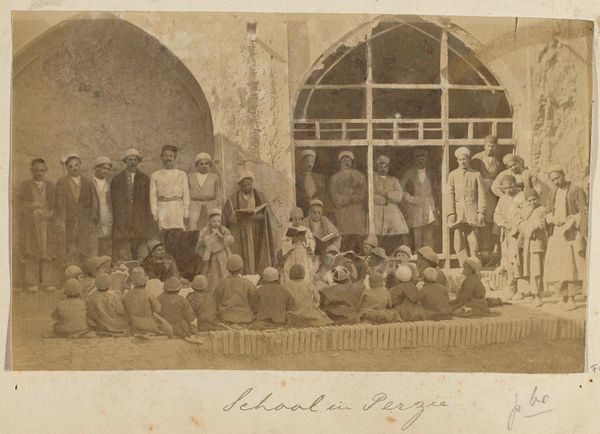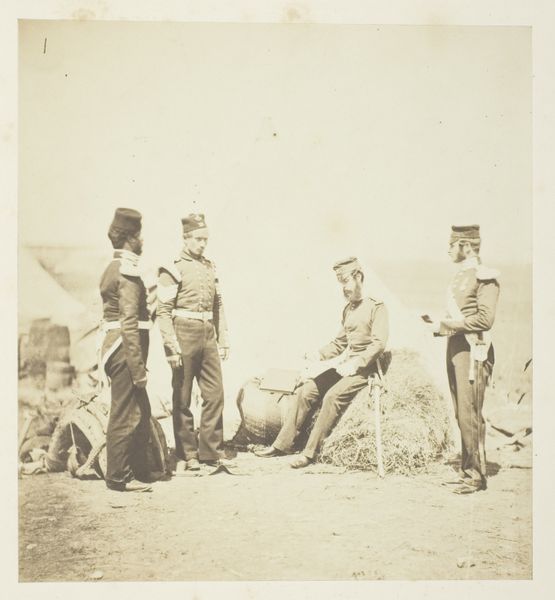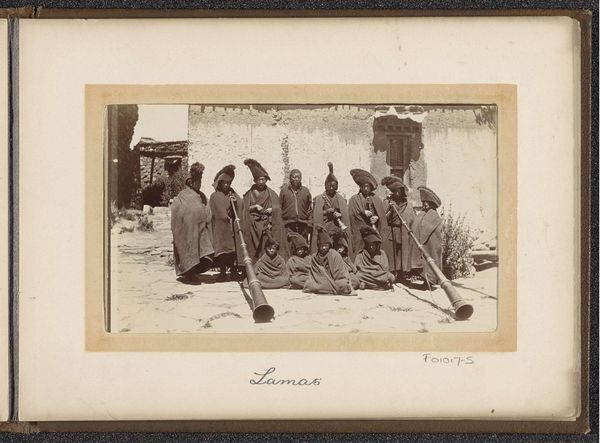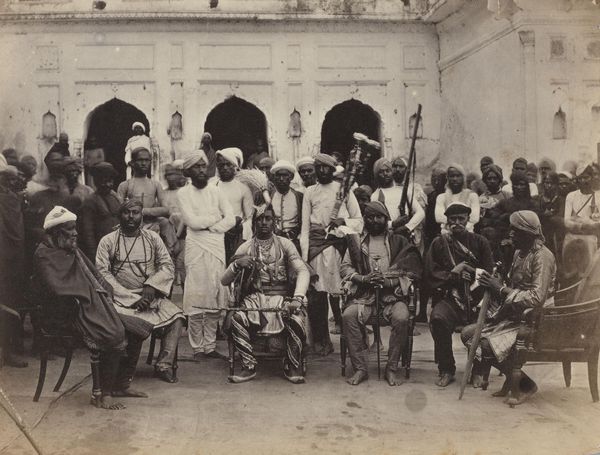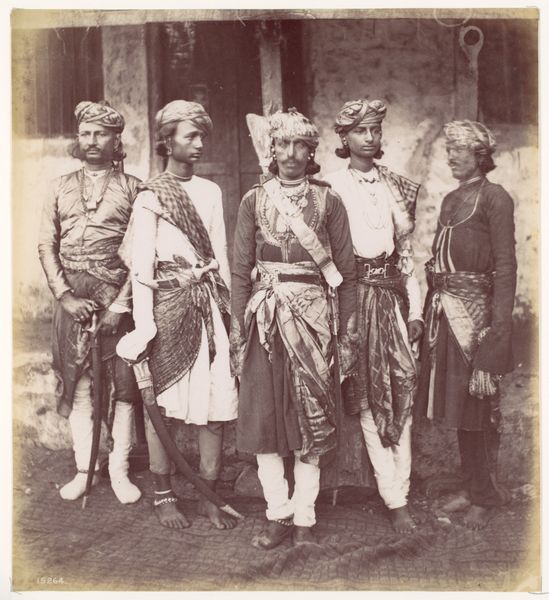![[In the Mosque of the Damegan/The Eunuchs] by Luigi Pesce](/_next/image?url=https%3A%2F%2Fd2w8kbdekdi1gv.cloudfront.net%2FeyJidWNrZXQiOiAiYXJ0ZXJhLWltYWdlcy1idWNrZXQiLCAia2V5IjogImFydHdvcmtzL2M0ZDI0YmFmLTIwMjYtNGRkMC04MTFmLTYzM2YwOTgyMzY2OS9jNGQyNGJhZi0yMDI2LTRkZDAtODExZi02MzNmMDk4MjM2NjlfZnVsbC5qcGciLCAiZWRpdHMiOiB7InJlc2l6ZSI6IHsid2lkdGgiOiAxOTIwLCAiaGVpZ2h0IjogMTkyMCwgImZpdCI6ICJpbnNpZGUifX19&w=3840&q=75)
photography, albumen-print
#
portrait
#
16_19th-century
#
archive photography
#
photography
#
historical photography
#
group-portraits
#
19th century
#
men
#
islamic-art
#
albumen-print
Dimensions: 16.3 x 23.2 cm. (6 7/16 x 9 1/8 in.)
Copyright: Public Domain
Editor: So, this is an albumen print from the 1850s called "[In the Mosque of the Damegan/The Eunuchs]" by Luigi Pesce, currently housed at the Met. It's a group portrait that, honestly, feels very posed and formal. What jumps out to you? How do you interpret this work considering it's a historical photography? Curator: It’s fascinating to consider the cultural and political context surrounding this image. Photography was still quite new in the 1850s. Who was it meant for and how were these images utilized and disseminated? This photograph could be seen as an early form of Orientalism, creating a visual record and, perhaps, also solidifying existing power dynamics. How does knowing that shape our view of it today? Editor: I hadn't thought about it that way, focusing on its function. Was it just for Western audiences? The photo is so still, the subjects don't seem natural at all. Curator: Exactly! The stiff formality suggests a carefully constructed image meant to convey something specific about the subjects. Who commissioned the photograph also matters. Considering European powers were vying for influence in the Middle East, images like this could have served strategic purposes. How do you think it might be read within its local Iranian community? Editor: I am curious about that. The people featured –their costumes and position relative to each other– seems like the image’s important message to the outside world at the time. Their status reflected how those images were presented to the general public. That makes me wonder, what are the ethics of looking? Curator: That's a vital question! Early photography was definitely shaped by colonial views. By analyzing its circulation and consumption, we can start to unravel its political and historical threads and come closer to understanding its real narrative and contemporary meanings. Editor: Thanks! I appreciate getting a wider, deeper perspective, it changed the entire artwork's meaning. Curator: And I value your curiosity. Keeps me honest in my analysis.
Comments
No comments
Be the first to comment and join the conversation on the ultimate creative platform.
